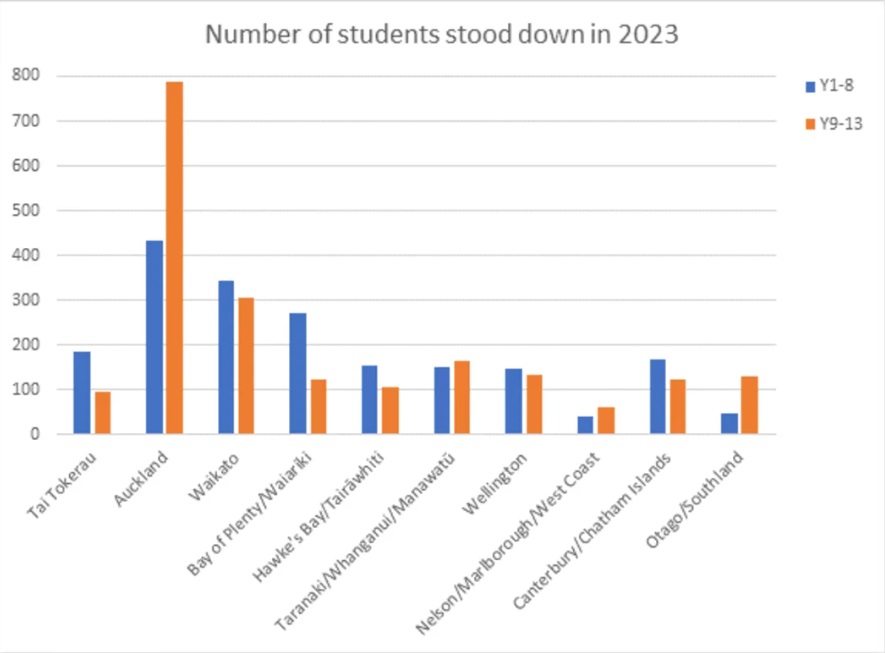
Last year, more pupils in years 1 to 8 were stood down for vaping and smoking than those in years 9 to 13 in six out of 10 regions, according to Ministry of Education data.
The total number of pupils stood down for vaping or smoking increased almost 19 percent from 2022 to 2023.
While the statistics did not separate vaping and smoking, vaping was the biggest issue, Rotorua's Kaitao Intermediate principal Phil Palfrey said.
Some pupils were so severely addicted they would brazenly puff away in the classroom, he said.
"It has permeated through our schools significantly, and has caused, for some students, behavioural issues which some of them wouldn't have exhibited previously."
He understood the use of vapes as a smoking cessation tool, but said the effect of making them available to the general public was not thought through.
Many Rotorua primary and intermediate schools now shared a new vaping policy focusing on educating kids and their parents.
It was penned by Palfrey, and seemed to be working.
Principals were at their "wits' end" in the middle of last year, but the issue seemed to die down towards the end of the year, he said.
"I could be wrong, but I think that a lot of schools have just become better at dealing with it."
But they should not have to, he said.

"The number of these events should not be used as a proxy measure for total student behaviour."
But it indicated principals were concerned, New Zealand Principals' Federation president Leanne Otene said.
"After educating and working with young people, they really are left with no choice but to take a harder line on it."
It was a societal problem that had become a burden for schools, she said.
"We should all be concerned about this.
"This is not a problem that primary schools, or secondary school principals and their staff can deal with alone."
Calls for stronger government action
The government was not yet taking the issue seriously enough, advocacy group Vape-free Kids co-founder Tammy Downer said.
"People think that this is all kids just playing around, and it's cool, and it's appealing, and they're just trying to look cool.
"Actually a lot of these kids are seriously addicted to it, they can't concentrate in class, they can't learn."
Palfrey, Otene and Downer all agreed wider systemic change was needed to keep vapes out of pupils' hands.
Last month, new regulations came into force requiring vapes to have a removable battery - meaning they were no longer disposable.
But that had not made an ounce of difference, Downer said, because alternatives were available and were just as cheap.
"[It] doesn't change the behaviour, people are still buying them, emptying them, throwing them in the back of the car or wherever, and buying the next one."
The new government had an opportunity to make a real difference, Downer said.
"They've said that they're going to be looking at the legislation around vaping and how to have an impact on the youth vaping epidemic.
"They really need to step up and take some significant steps to help that happen."
Education Minister Erica Stanford was unavailable for an interview, but said in a statement that she was concerned about vaping and smoking in schools - particularly in primary schools.
"The NZ First / National coalition agreement includes policies to ban disposable vaping products and increase penalties for illegal sales to those under 18," she said.
"Health officials have been asked to provide advice on the practical steps that will help stop young people from starting smoking and vaping."












